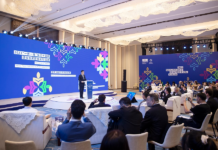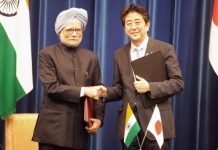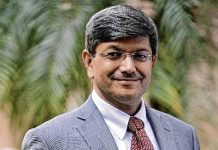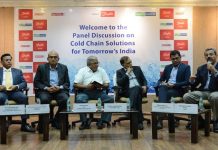MARKET PERSPECTIVE
By J Mulraj
Dec 7-13, 2024
It can solve societal problems or can create more
Speaking at an NDTV World Summit, Sunil Mittal, Chairman of Bharti Enterprises, told the audience about how he was nearly defrauded by a scammer who used AI, artificial intelligence, to clone Mittal’s voice perfectly. Using Mittal’s voice, the scammer gave telephonic instructions to a group executive to transfer a large amount of money. Luckily, the executive was alert enough to recognize it as an attempted fraud and to prevent it. It’s a warning to all, about the likelihood of misuse of technology.
AI, which has an enormous potential to improve productivity, and to enhance creativity (the image above was created in a few minutes by Bing, using AI) can also be misused. AI can clone a person’s voice, his face, and his mannerisms so realistically, that they easily become victims of fraud. A podcast I heard started with a woman receiving a phone call, ostensibly from her young daughter, in her (cloned) voice, seeking help from a kidnapper. He then came on the line asking for money. The mother, in panic phoned the house where her daughter was at a sleepover, only to be reassured that her daughter was asleep and safe.
Imagine a scenario where TV channels get a video of a cloned world leader, with a cloned voice, both authentic, announcing the launch of nuclear missiles at multiple locations, giving only 20 minutes to respond! This is the satanic misuse of technology.
Take another recent incident as an illustration of misuse. We all know of the immense benefits of 3D printing in manufacture. The traditional process of manufacture is to take a large piece of raw material (cloth, wood, stone etc.) and remove the unnecessary parts to arrive at the final product. The removed portions are waste, and are thrown away. This is called deductive manufacture.
3D printing uses, in contrast, the process of additive manufacture, adding layer upon layer of material, on the 3D printer, to produce the product. This eliminates wastage.
More than this, the benefits are greater. Consider a store selling garments, say, shirts. It will need to stock, say, 12 designs, in 8 colors in 6 sizes. But a store with a 3D printer can print out an order in a few minutes, displaying designs and colours on a screen, and the sizes via samples. It’s store need not display a large inventory, freeing up working capital. There is no wastage during manufacture and no loss in unsold inventory.
But the recent shooting of Brian Thomson, CEO of insurer United Healthcare, by an assailant, probably Luigi Mangioni, a suspect, reveals the dark side of 3D printing. For Luigi was, when apprehended, carrying a 3D printed gun and 3D printed bullets. Gun control is quite ineffective in America already. Since anyone can own a 3D printer, the production of guns is hypothetically universal. And it will be untraceable, not carrying any number nor sold at any outlet.
Or consider weapons technology. Elon Musk, a technology genius, propounds that drones, rather than F35s, will be the way future wars will be fought. This is called asymmetrical warfare. Drones are far far cheaper than 5G fighter aircraft. This was demonstrated by Azerbaijan in its conflict with Armenia years ago. Azerbaijan used Israeli and Turkish ‘loitering drones’, a.k.a. Kamikaze drones, to defeat Armenia. These drones loiter over their intended target until it is safe to attack, then drop down on it, destroying themselves in the process. Hence kamikaze.
Yet the use of drones to deliver medical assistance swiftly, or to affect rescues, or track criminals, is the good use of this technology.
Investors have to chart their course through several factors like tariffs and trade wars, conflicts and chaos, greed and geopolitics and, now, technology and threats. A study of the new, disruptive, technologies is essential to invest in them, for these stocks will drive the next wave. Technology is a double edged sword, but one expects the good sides of it will outweigh the bad.
Last week the BSE Sensex ended at 82133 , up 424 points.
Last week the RBI cut rates by 50 basis points. It also lowered India’s FY 2025 GDP forecast a bit, to 6.6%. That’s still a healthy growth, better than other large economies. As per this article the number of farm workers has increased by 68 million during the six years to 2023-24. Of these 66.6 m. are women. This is a bad sign. The number of people employed in agriculture decreases as an economy matures, but its increasing in India. The terms of trade disfavor farmers. Over 50% of Indians depend on farm income but get some 17% of income.
An effort was made by PM Modi to remedy this, by giving farmers the option to sell produce either to the Government or in the free market, as they preferred. Not properly communicated to them, the farmers protested. The risk to the economy is that it will lead to competitive sops being promised in State elections by politicians who opt to be dense than have common sense. The sops, like free water or subsidized urea (higher subsidy than others, leading to its overuse) actually harm farmer interest by degrading the soil. How will policy ever change in these circumstances?
The collapse of Syria, whose President, Assad, has fled, has created enormous danger to the Middle East. The fix needs mature statesmanship, but there are few statesmen left, who command respect. This calls for caution.
And a prayer!
Image created by Bing
Comments may be sent to Jmulraj@asiaconverge.com










































COMMENTS